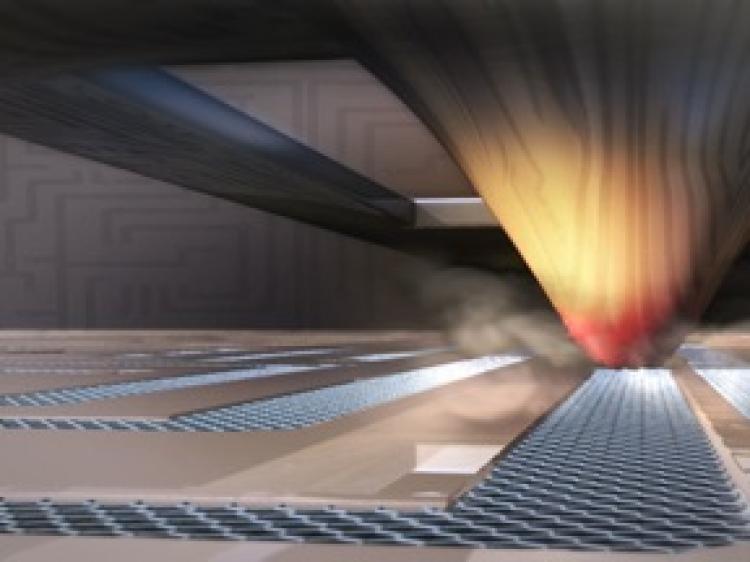Scientists have made a breakthrough toward creating nanocircuits on graphene, a carbon sheet one atom thick.
Transistors built with graphene on a nanoscale could be smaller, faster, and consume less power than today’s silicon transistors, which are almost as small as the laws of physics allow.
The simple technique involves using a heated silicon tip to heat the surface of graphene oxide to 130 degrees C (266 F), which alters its properties from an insulating material to a conducting one, the researchers report in the journal Science.
Commenting on the research, physics professor Dr. Walt De Heer at Georgia Tech said in a press release: “The simple conversion from graphene oxide to graphene is an important and fast method to produce conducting wires. This method can be used not only for flexible electronics, but it is possible, sometime in the future, that the bio-compatible graphene wires can be used to measure electrical signals from single biological cells.”
Transistors built with graphene on a nanoscale could be smaller, faster, and consume less power than today’s silicon transistors, which are almost as small as the laws of physics allow.
The simple technique involves using a heated silicon tip to heat the surface of graphene oxide to 130 degrees C (266 F), which alters its properties from an insulating material to a conducting one, the researchers report in the journal Science.
Commenting on the research, physics professor Dr. Walt De Heer at Georgia Tech said in a press release: “The simple conversion from graphene oxide to graphene is an important and fast method to produce conducting wires. This method can be used not only for flexible electronics, but it is possible, sometime in the future, that the bio-compatible graphene wires can be used to measure electrical signals from single biological cells.”





